#g6 series
Explore tagged Tumblr posts
Text
credit: anontatum on x
i've got you brother - the jays
#all the moments 🥹#“that your light-skinned brother” 😭#“i need him through the journey”#FIRE AND ICE#“instead of separating we became closer” all those stupid people who said break up the jays!!#“i know if i got 7 on my team”#i'm sorry i love it when players refer to each other by their numbers (smtg very personal about it idk)#“i know push come to shove he got my back and i got his”#INSANE ASS STATEMENT#“my partner in crime” I-#“brother for life”#all the finals clips god they really won a championship off the power of LOVE#jayson flexing then collapsing into jaylen...#that moment from the cavs series lives RENT FREE in my head#jayson's fancy coat from last All Stars as he cheered on jaylen (pls wear smtg like this again jt🙏)#all the hugs!#all the massages on the back!#(the trust needed to let another person soothe your stress...)#all the pats on the butt!!!#the forehead touching after 2023 miami g6 GOD#their rolling the dice handshake#esp after 2024 dallas g3#“i love you bro”#adding the bro at the end SMH#they deserved last june sooo fucking much#the jays#jayson tatum#jaylen brown
7 notes
·
View notes
Text
belated bitching about the worldbuilding as presented in enterprise here: it was my impression from bits about the eugenics wars -> starfleet transition mentioned in tos & tng & ds9 that at this point (starfleet existing and for a while at that before the federation was founded) they're supposed to have Eliminated significant conflict on earth and along with it national borders. if that's the case why the hell does the BRITISH ROYAL NAVY STILL EXIST
#p#ent#like am i stupid? is that not what's implied by all the 'we overcame our biases' shit kirk was saying all the time?#or the whole 'worldwide brotherhood of man' vibe presented in tos or that nationalities are rarely mentioned at all in preceding series?#bc if i am wrong and starfleet is in fact a fucking. g6 countries project i think that spits in the face of the ideals of the original work
3 notes
·
View notes
Text
top 5 smart watches
Introducing the epitome of luxury and technology – our state-of-the-art smartwatch. Crafted with precision and care, this watch is the ultimate companion for the modern-day individual who values style and sophistication, without sacrificing functionality.
1. Fire-Boltt Blizzard is a pure luxury smartwatch made with Stainless Steel featuring a rotating crown & High Technology Ceramic
2. 1.28″ Display packed with Bluetooth Calling functions, with built in mic & speaker | AI Voice Assistant & 120 Sports Modes | Built In Games
3. Best In Class Design – Fire-Boltt Blizzard comes with 3 buttons, 1 with a rotating crown having anti-corrosion properties and the other 2 are push buttons
4. Complete Health Tracking – With luxury comes health, Fire-Boltt Blizzard has you covered while it tracks SpO2, Heart Rate & monitors Sleep | Water Resistant with IP67 Rating
With Call Function
Touchscreen
Fitness & Outdoor, Health & Medical, Watchphone
#best android smartwatch for men#best smartwatch for dexcom g6#small face smartwatch#best smart watch for elderly#cheapest fire boltt watch series 8#long lasting smartwatch#budget smartwatch 2022#best tough smartwatch#android equivalent to fire boltt watch#best android compatible smartwatch#amazon fitbit versa 4#smartwatch for#best active smartwatch#Amazfit cyber monday 2022#best tech watches#best smartwatch for nurses#best fire boltt watch for health#best price fire boltt watch series 8#durable smart watches for construction workers#elegant smart watches#best smartwatch for athletes#best tactical smartwatch 2022#cyber monday smart watch#best iphone compatible watch#best fire boltt watch series 8 deals#best deal on fire boltt watch series 7#best health monitor watch for seniors#galaxy watch 2023#Amazfit watch for biking#smart watch for working man
0 notes
Text
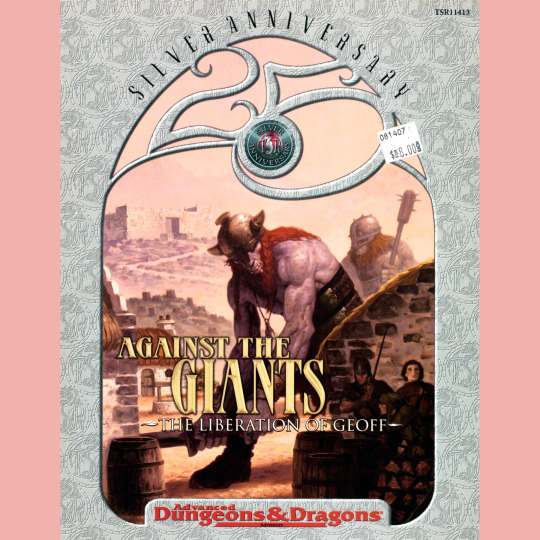
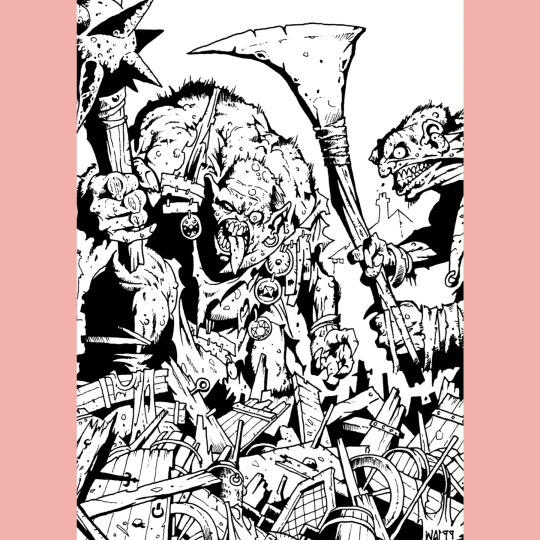



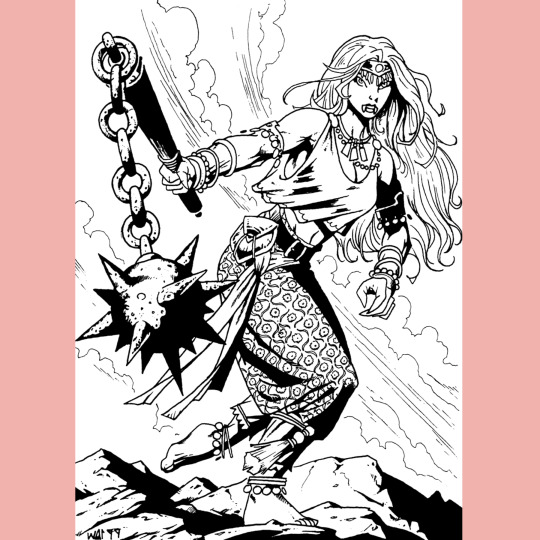
After TSR died and was brought back to an undead half-life by Wizards of the Coast, there came a set of adventures that returned to classic 1e adventure sites. The first was 1998’s Return to the Tomb of Horrors box set (which I covered a while back). It was followed a trio of “silver anniversary” branded books and modules, first of which was Against the Giants: The Liberation of Geoff (1999). I know Geoff is a dutchy or whatever in Greyhawk, but I still have a hard time with the title because it sounds like it should be a novel about a guy named Geoff’s sexual awakening, possibly written by D. H. Lawrence.
Anyway, Geoff was invaded and subjugated by giants. You need to kick ‘em out. The first section of the book presents the original G-series modules, updated to 2E. That’s followed by a general sort of sourcebook on Geoff, which is further divided into a collection of adventure sites which are basically towns subjugated by various evil humanoids — orc town, ogre town, wererat town. The three main locales (each accompanied by a couple minor locations) form up three additions G-series modules, sorta. There’s G4: Mount Rungnirheim (more frost giants?), G5: Castle Thrasmotnir (more fire giants?) and G6: Cloud Islands of the Sakhut (cloud giants). It is odd to me that we got more frost and fire (god, just typing that out, I heard it sung by Cirith Ungol) when the stone giants and storm giants are out there, getting no love. The second batch of frost giants at least are prone to having multiple heads, which seems weird but also I like it.
And that’s…basically it. If you want more giants, you got more giants! The book mostly shrugs at the original G-series sub-plot involving the drow — if you finished G3, the plot’s been disrupted, the caves collapsed, the drow in retreat for however long it takes them to build up their nerve again. I’m OK with that!
Brom on the cover. Wayne Reynolds inside. It’s a good looking module.
#tabletop rpg#roleplaying game#dungeons & dragons#rpg#ttrpg#d&d#Against The Giants#Liberation Of Geoff#noimport
94 notes
·
View notes
Text
COMPUTERPICS! FINALLY!
3 photos and a buncha text underneath!
heres the tower of power aka my lovely desktop lovers. i dont have my own place so my cumputers are all stacked up in my very small bedroom i rent.
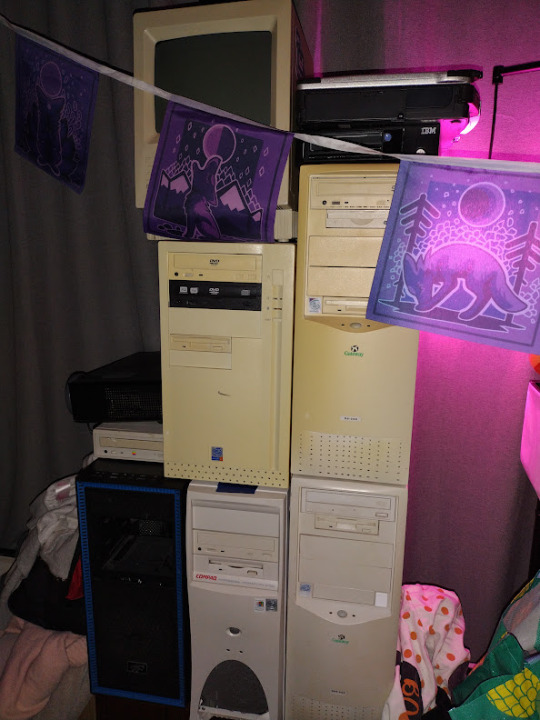
from the bottom up, here we have the black deepcool case from my first gaming pc build. rn it has an older gaming setup board in it that i took from work, and am going to turn into a NAS archive.
right of that is the strikingly handsome Compaq AP550 workstation, a dual Slot One CPU system ive populated with two Pentum IIIs but have yet to start up!
to his right is one of my two gateway G series desktops, a GP7-500, which i believe is sporting a Pentium II i shoved in there mostly for storage, and to use its Pentium III in the compaq, hahah. my second gateway tower is atop him, a G6-350 with a Pentium II.
to her left is another generic build, the newest among my vintage desktop computers, sporting a Pentium 4. i named her Nike after the very coincidentally formed mark on her front which i cant bring myself to wipe away =]
above her, obfuscated by the coyote prayer flags from artist CoyoticTroubles, is my Macintosh SE, Sarah! she was the first vintage computer i ever owned! i got her when i was a teenager from a flea market. she sports dual diskette drives and an ultradrive 80 Si hard disk with some interesting files on it. since i didnt get her from my work, i was able to keep the data on her disk. hopefully it hasnt all been lost, since i havent turned her on since highschool! heres a clear photo of her:
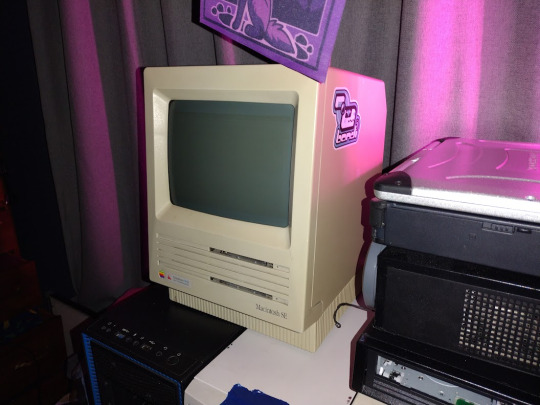
to her right you can see one of my many toughbooks, a projector, and a somewhat busted up tape drive. ill post some more individual photos sometime soon maybe! something more intimate. id also like to do sensual repair or maintenance or upgrade POV videos with them!
the rest of my computers in my room live on top of my dresser, demonstrated in the following photo featuring my partners spidergwen statue and a little playdoh sculpture they made me hahahah. here you can see my Dell Optiplex GXa holding up two generic builds from the 90s, and on the right my HP 700/96 terminal, who matches my HP D-Class 9000 server that i havent photographed yet. on top of the left tower theres a chip programmer box i found at work hahah its super cool looking i had to take it..
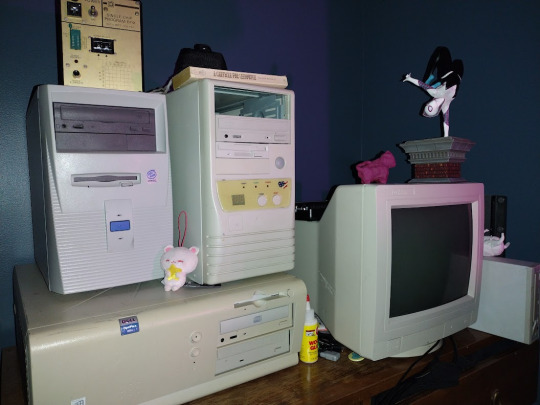
you can also see my appleCD drive on the far right!
feel free to let me know what you think about my harem collection of vintage computers in the replies or my dms or reblog or whatevs idk im new here and i just love chatting with folks! thnx for looking!
#computer love#computers#vintage computer#computer#computer collection#objectum#my photography#my collection#terminal#compact macintosh#macintosh#vintage mac#dell optiplex gxa#optiplex gxa#pentium ii#pentium iii#pentium
19 notes
·
View notes
Text
ok so i hc the cars' "model year" to be when they reach maturity around ages 20-25. and i was curious what ages the characters could realistically be in 2024. so here are some of my hcs + thought processes:
(on cars being 'born' or being kids at some point: see Coriander Widetrack, Maddy McGear, and Cruz's backstory.)
(baseline: cars 1 takes place in late 2005, the year it was scheduled to release before the delay (also confirmed in cars VG epilogue). by this logic, cars 3 takes place partly in late 2017/mainly early 2018, the year it was scheduled to release before it swapped releases with TS4).
cruz + jackson: ~31
2017 CRS sports coupe. 2017 one of a kind stock car. likely born early 90's. racers irl dont reach cup levels til theyve proven themselves for many years in lower divisions. cruz already had a successful career as a top-level PT in 2018. my guess is they were around age 25 in cars 3. (jackson is probably younger than cruz if anything, but they do have the same model year still. its not an exact science.)
lightning: ~43
2006 one of a kind stock car. we know lightning raced in the regionals (book excerpt) before the cup series- he spent his younger years trying to prove himself. he is based on a G4 nascar stock car (specifically the 2002 monte carlo ss [image source: cars 1 art book]) (bonus post), which ran until 2007.
cal: ~42 (lol)
cal is implied to have been a rookie in the 2006 or 2007 season, taking up the dinoco team spot after strip retired in 2005. his body style resembles the G5 and the G4 nascar body types.
bobby and brick: ~40
bobby and brick have more modern bodystyles, and thus are implied to have been rookies after 2007 when the G4 retired. they are either based on the COT (G5), but they more closely resemble G6's, which was the type being raced while cars 3 was in production.
sally: ~47
2002 porsche carerra 911 (+ additional bc half the early 00's sources died of link rot). at the very least she is 4 years older than lightning. she went to 7 years of law school and was practicing law in CA. after that, she had time to restart her life and refurbish an entire motel. shes probably closer to 50.
mater: ~66
(i will edit this post with his passport when i find the op who posted the image bc i dont wanna repost the image but its from the cars 2 credits crawl iirc?)
mack: ~59
aprox a 1985 mack superliner mk.2. my source on this is that i looked at superliners from the eighties in like 2019 and this was the closest one visually to mack iirc. but with many of the cars it may not be exact!
westley (OC): ~30ish
roger (OC): ~39ish
might add more characters another time but this is a good start!
27 notes
·
View notes
Text
Due to recent events about g6 mlp coming soon, I’ve decided to info dump a bunch of information about my G6 mlp because I know at the end of the day no one isn’t gonna pick my ideas and no one’s gonna contact me into working on anything mlp official stuff.
(At the end of the day.. just some nobody artist on the internet I’ll never be like Laura Faust )
anyways Here’s what G6 is about

This series is mainly about two sisters and their friends goes on a quest to Not only save the alicorn spirits but also the world. Mainly because the villain of the story majesty (previously named Sapphire but she changed it) Want all of the alicorns’ magic all to herself and taking all the alicorn spirits out from every equine of the land. Which her greed has negative consequences to the world around her making the world colorless, gray and crumbling.
Alicorns were once alive from these lands until they decided to change themselves into other kinds of equine after feeling trapped with unlimited power. And in return the alicorns later became the (three) pony kinds. Earth pony, Pegasi and unicorn and the rest was history. (Zebras and Donkeys do count as the pony kinds ie A Zebra or Donkey can be ether Pegasi or unicorn) (also Zebras when meeting equine with no stripes “stripeless Zebras” and Sees all equine as connected to one of the many alicorns.)
The Main characters in the Series are Fizzy, minty, guava Lava, Pepper and Clover. Fizzy’s a Unicorn who’s magic always goes array, and always clumsy, Minty a earth pony who’s a supportive sister yet nervous wreak of a mare, Guava’s a Pegasi who always loves going with the flow and was raised in a herd full of Pegasi and Dragons who live in harmony. Pepper’s a Dragon who can’t breath fire but only breaths Smoke. And Clover is an Earth pony who comes in a long family line of earth ponied who can do magic.
In the world They live in, it’s something similar to the veins of Pokemon mystery dungeon and g1 mlp ie these are animals who are still animals but live in a type of society in a sense. They use leaves as plates and food, and to carry their food with. For the most part their world is full of peace and harmony. Sure there might be predators here and there but for the most part everything else is chill
The Dragon and Pegasi herd are a nomad herd of Dragons who tend to migrate during seasons. There’s a bit of a symbiotic relationship between the dragons and the Pegasi as far as they could remember. They have strong bonds and the best way of showing their love for each other is rough housing. And when it comes to members of their herd rather it would be them missing a wing, being too old or even too young or too weak, they always look out for each other and protect each other.
(here’s just some stuff here)



If theres more stuff you guys wanna ask me please feel free. Like you guys asking me questions about this might actually make me feel a lil better..
#Mlp#my little pony#mlp g6#idk man#concept art#my ideas#design ideas#ideas#digital doodle#random ramblings
25 notes
·
View notes
Text
Music Theory notes (for science bitches) part 3: what if. there were more notes. what if they were friends.
Hello again, welcome back to this series where I try and teach myself music from first principles! I've been making lots of progress on zhonghu in the meantime, but a lot of it is mechanical/technical stuff about like... how you hold the instrument, recognising pitches
In the first part I broke down the basic ideas of tonal music and ways you might go about tuning it in the 12-tone system, particularly its 'equal temperament' variant [12TET]. The second part was a brief survey of the scales and tuning systems used in a selection of music systems around the world, from klezmer to gamelan - many of them compatible with 12TET, but not all.
So, as we said in the first article, a scale might be your 'palette' - the set of notes you use to build music. But a palette is not a picture. And hell, in painting, colour implies structure: relationships of value, saturation, hue, texture and so on which create contrast and therefore meaning.
So let's start trying to understand how notes can sit side by side and create meaning - sequentially in time, or simultaneously as chords! But there are still many foundations to lay. Still, I have a go at composing something at the end of this post! Something very basic, but something.
Anatomy of a chord
I discussed this very briefly in the first post, but a chord is when you play two or more notes at the same time. A lot of types of tonal musical will create a progression of chords over the course of a song, either on a single instrument or by harmonising multiple instruments in an ensemble. Since any or all of the individual notes in a chord can change, there's an enormous variety of possible ways to go from one chord to another.

But we're getting ahead of ourselves. First of all I wanna take a look at what a chord actually is. Look, pretty picture! Read on to see what it means ;)
So here is a C Minor chord, consisting of C, D# and G, played by a simulated string quartet:
(In this post there's gonna be sound clips. These are generated using Ableton, but nothing I talk about should be specific to any one DAW [Digital Audio Workstation]. Ardour appears to be the most popular open source DAW, though I've not used it. Audacity is an excellent open source audio editor.)

Above, I've plotted the frequency spectrum of this chord (the Fourier transform) calculated by Audacity. The volume is in decibels, which is a logarithmic scale of energy in a wave. So this is essentially a linear-log plot.
OK, hard to tell what's going on in there right? The left three tall spikes are the fundamental frequencies of C4 (262Hz), D♯4 (310Hz), and G4 (393Hz). Then, we have a series of overtones of each note, layered on top of each other. It's obviously hard to tell which overtone 'belongs to' which note. Some of the voices may in fact share overtones! But we can look at the spectra of the indivudal notes to compare. Here's the C4 on its own. (Oddly, Ableton considered this a C3, not a C4. as far as I can tell the usual convention is that C4 is 261.626Hz, so I think C4 is 'correct'.)
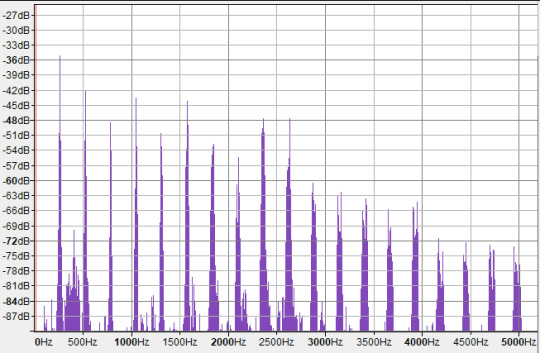
Here, the strongest peaks are all at integer multiples of the fundamental frequency, so they look evenly spaced in linear frequency-space. These are not all C. The first overtone is an octave above (C5), then we have three times the frequency of C4 - which means it's 1.5 times the frequency of C5, i.e. a perfect fifth above it! This makes it a G. So our first two overtones are in fact the octave and the fifth (plus an octave). Then we get another C (C6), then in the next octave we have frequencies pretty close to E6, G6 and A♯6 - respectively, intervals of a major third, a perfect fifth, and minor 7th relative to the root (modulo octaves).
However, there are also some weaker peaks. Notably, in between the first and second octave is a cluster of peaks around 397-404Hz, which is close to G4 - another perfect fifth! However, it's much much weaker than the overtones we discussed previously.
The extra frequencies and phase relationships give the timbre of the note, its particular sound - in this case you could say the sense of 'softness' in the sound compared to, for example, a sine wave, or a perfect triangle wave which would also have harmonics at all integer frequencies.
Perhaps in seeing all these overtones, we can get an intuitive impression of why chords sound 'consonant'. If the frequencies of a given note are already present in the overtones, they will reinforce each other, and (in extremely vague and unscientific terms) the brain gets really tickled by things happening in sync. However, it's not nearly that simple. Even in this case, we can see that frequencies do not have to be present in the overtone spectrum to create a pleasing sense of consonance.
Incidentally, this may help explain why we consider two notes whose frequencies differ by a factor of 2 to be 'equivalent'. The lower note contains all of the frequencies of the higher note as overtones, plus a bunch of extra 'inbetween' frequencies. e.g. if I have a note with fundamental frequency f, and a note with frequency 2f, then f's overtones are 2f, 3f, 4f, 5f, 6f... while 2f's overtones are 2f, 4f, 6f, 8f. There's so much overlap! So if I play a C, you're also hearing a little bit of the next C up from that, the G above that, the C above that and so on.
For comparison, if we have a note with frequency 3f, i.e. going up by a perfect fifth from the second note, the frequencies we get are 3f, 6f, 9f, 12f. Still fully contained in the overtones of the first note, but not quite as many hits.
Of course, the difference between each of these spectra is the amplitudes. The spectrum of the lower octave may contain the frequencies of the higher octave, but much quieter than when we play that note, and falling off in a different way.
(Note that a difference of ten decibels is very large: it's a logarithmic scale, so 10 decibels means 10 times the energy. A straight line in this linear-log plot indicates a power-law relationship between frequency and energy, similar to the inverse-square relationship of a triangle wave, where the first overtone has a quarter of the power, the second has a ninth of the power, and so on.)
So, here is the frequency spectrum of the single C note overlaid onto the spectrum of the C minor chord:

Some of the overtones of C line up with the overtones of the other notes (the D# and G), but a great many do not. Each note is contributing a bunch of new overtones to the pile. Still, because all these frequencies relate back to the base note, they feel 'related' - we are drawn to interpret the sounds together as a group rather than individually.
Our ears and aural system respond to these frequencies at a speed faster than thought. With a little effort, you can pick out individual voices in a layered composition - but we don't usually pick up on individual overtones, rather the texture created by all of them together.
I'm not gonna take the Fourier analysis much further, but I wanted to have a look at what happens when you crack open a chord and poke around inside.
However...
In Western music theory terms, we don't really think about all these different frequency spikes, just the fundamental notes. (The rest provides timbre). We give chords names based on the notes of the voices that comprise them. Chord notation can get... quite complicated; there are also multiple ways to write a given chord, so you have a degree of choice, especially once you factor in octave equivalence! Here's a rapid-fire video breakdown:
youtube
Because you have all these different notes interacting with each other, you further get multiple interactions of consonance and dissonance happening simultaneously. This means there's a huge amount of nuance. To repeat my rough working model, we can speak of chords being 'stable' (meaning they contain mostly 'consonant' relations like fifths and thirds) or 'unstable' (featuring 'dissonant' relations like semitones or tritones), with the latter setting up 'tension' and the former resolving it.
However, that's so far from being useful. To get a bit closer to composing music, it would likely help to go a bit deeper, build up more foundations and so on.
In this post and subsequent ones, I'm going to be taking things a little slower, trying to understand a bit more explicitly how chords are deployed.
An apology to Western music notation
In my first post in this series, I was a bit dismissive of 'goofy' Western music notation. What I was missing is that the purpose of Western music notation is not to clearly show the mathematical relationships between notes (something that's useful for learning!)... but to act as a reference to use while performing music. So it's optimising for two things: compactness, and legibility of musical constructs like phrasing. Pedagogy is secondary.
Youtuber Tantacrul, lead developer of the MuseScore software, recently made a video running over a brief history of music notation and various proposed alternative notation schemes - some reasonable, others very goofy. Having seen his arguments, he makes a pretty good case for why the current notation system is actually a reasonable compromise... for representing tonal music on the 12TET system, which is what it's designed for.
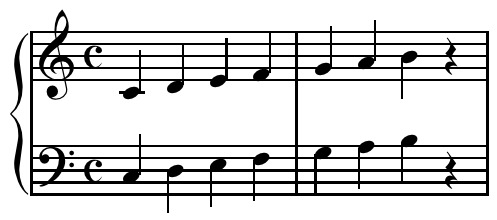
So with that in mind, let me try and give a better explanation of the why of Western music notation.
In contrast to 'piano roll' style notation where you represent every possible note in an absolute way, here each line of the stave (staff if you're American) represents a scale degree of a diatonic scale. The key signature locates you in a particular scale, and all the notes that aren't on that scale are omitted for compactness (since space is at an absolute premium when you have to turn pages during a performance!). If you're doing something funky and including a note outside the scale, well that's a special case and you give it a special-case symbol.
It's a similar principle to file compression: if things are as-expected, you omit them. If things are surprising, you have to put something there.
However, unlike the 简谱 jiǎnpǔ system which I've been learning in my erhu lessons, it's not a free-floating system which can attach to any scale. Instead, with a given clef, each line and space of the stave has one of three possible notes it could represent. This works, because - as we'll discuss momentarily - the diatonic scales can all be related to each other by shifting certain scale degrees up or down in semitones. So by indicating which scale degrees need to be shifted, you can lock in to any diatonic scale. Naisuu.
This approach, which lightly links positions to specific notes, keeps things reasonably simple for performers to remember. In theory, the system of key signatures helps keep things organised, without requiring significant thought while performing.
That is why have to arbitrarily pick a certain scale to be the 'default'; in this case, history has chosen C major/A minor. From that point, we can construct the rest of the diatonic scales as key signatures using a cute mathematical construct called the 'circle of fifths'.
How key signatures work (that damn circle)
So, let's say you have a diatonic major scale. In piano roll style notation, this looks like (taking C as our base note)...

And on the big sheet of scales, like this:

Now, let's write another diatonic major scale, a fifth up from the first. This is called transposition. For example, we could transpose from C major to G major.

Thanks to octave equivalency, we can wrap these notes back into the same octave as our original scale. (In other words, we've added 7 semitones to every note in our original scale, and then taken each one modulo 12 semitones.) Here, I duplicate the pattern down an octave.

Now, if we look at what notes we have in both scales, over the range of the original major scale.

Well, they're almost exactly the same... but the fourth note (scale degree) is shifted up by one semitone.
In fact, we've seen this set of notes before - it is after all nothing more than a cyclic permutation of the major scale. We've landed on the 'Lydian mode', one of the seven 'modes' of the diatonic major scale we discussed in previous posts. We've just found out that the Lydian mode has the same notes as a major scale starting a fifth higher. In general, whether we think of it as a 'mode' or as a 'different major scale' is a matter of where we start (the base note). I'm going to have more to say about modes in a little bit.
With this trick in mind, we produce a series of major scales starting a fifth higher each time. It just so happens that, since the fifth is 7 semitones, which is coprime with the 12 semitones of 12TET, this procedure will lead us through every single possible starting note in 12TET (up to octave equivalency).
So, each time we go up a fifth, we add a sharp on the fourth degree of the previous scale. This means that every single major scale in 12TET can be identified by a unique set of sharps. Once you have gone up 12 fifths, you end up with the original set of notes.
This leads us to a cute diagram called the "circle of fifths".
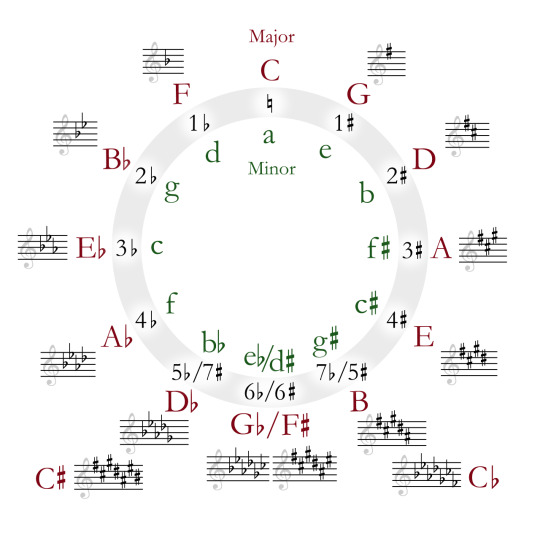
Because going up a fifth is octave-equivalent to going down a fourth, we can also look back one step on the circle to find out which note needs to be made sharper. So, from C major to G major, we have to sharpen F - the previous note on the circle from C. From G major to D major, we have to sharpen C. From D major to A major, we have to sharpen G. And so on.
By convention, when we write a key signature to define the particular scale we're using, we write the sharps out in circle-of-fifths order like this. The point of this is to make it easy to tell at a glance what scale you're in... assuming you know the scales already, anyway. This is another place where the aim of the notation scheme is for a compact representation for performers rather than something that makes the logical structure evident to beginners.
Also by convention, key signatures don't include the other octaves of each note. So if F is sharp in your key signature, then every F is sharp, not just the one we've written on the stave.
This makes it less noisy, but it does mean you don't have a convenient visual reminder that the other Fs are also sharp. We could imagine an alternative approach where we include the sharps for every visible note, e.g. if we duplicate every sharp down an octave for C♯ major...
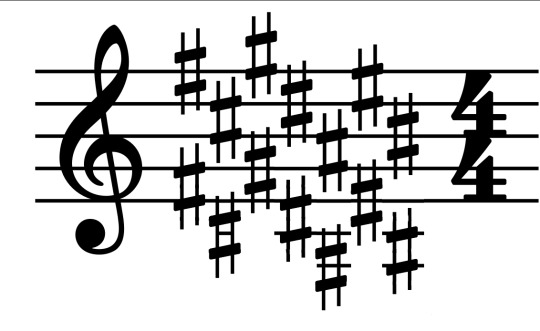
...but maybe it's evident why this would probably be more confusing than helpful!
So, our procedure returns the major scales in order of increasing sharps. Eventually you have added seven sharps, meaning every scale degree of the original starting scale (in this case, C Major) is sharpened.
What would it mean to keep going past this point? Let's hop in after F♯ Major, at the bottom of the Circle of Fifths; next you would go to C♯ Major by sharpening B. So far so good. At this point we have sharps everywhere, so the notes in your scale go... C♯ D♯ E♯ F♯ G♯ A♯ B♯ C♯ ...except that E♯ is the same as F, and B♯ is the same as C, so we could write that as C♯ D♯ F F♯ G♯ A♯ C C♯
But then to get to 'G♯ Major', you would need to sharpen... F♯? That's not on the original C-major scale we started with ! You could say, well, essentially this adds up to two sharps on F, so it's like F♯♯, taking you to G. So now you have...
G♯ A♯ C C♯ D♯ F G G♯
...and the line of the stave that you would normally use for F now represents a G. You could carry on in this way, eventually landing all the way back at the original set of notes in C Major (bold showing the note that just got sharpened in each case):
D♯ F G G♯ A♯ C D D♯ A♯ C D D♯ F G A A♯ F G A A♯ C D E F C D E F G A B C
But that sounds super confusing - how would you even represent the double sharps on the key signature? It would break the convention that each line of the stave can only represent three possible notes. Luckily there's a way out. We can work backwards, going around the circle the other way and flattening notes. This will hit the exact same scales in the opposite order, but we think of their relation to the 'base' scale differently.
So, let's try starting with the major scale and going down a fifth. We could reason about this algebraically to work out that sharpening the fourth while you go up means flattening the seventh when you go down... but I can also just put another animation. I like animations.

So: you flatten the seventh scale degree in order to go down a fifth in major scales. By iterating this process, we can go back around the circle of fifths. For whatever reason, going down this way we use flats instead of sharps in the names of the scale. So instead of A♯ major we call it B♭ major. Same notes in the same order, but we think of it as down a rung from F major.
In terms of modes, this shows that the major scale a fifth down from a given root note has the same set of notes as the "mixolydian mode" on the original root note. ...don't worry, you don't gotta memorise this, there is not a test! Rather, the point of mentioning these modes is to underline that whether you're in a major key, minor key, or one of the various other modes is all relative to the note you start on. We'll see in a moment a way to think about modes other than 'cyclic permutation'.
Let's try the same trick on the minor key.

Looks like this time, to go up we need to sharpen the sixth degree, and to go down we need to flatten the second degree. As algebra demands, this gives us the exact same sequence of sharps and flats as the sequence of major scales we derived above. After all, every major scale has a 'relative minor' which can be achieved by cyclically permuting its notes.
Going up a fifth shares the same notes with the 'Dorian mode' of the original base note, and going down a fifth shares the same notes with the 'Phrygian mode'.
Here's a summary of movement around the circle of fifths. The black background indicates the root note of the new scale.

Another angle on modes
In my first two articles, I discussed the modes of the diatonic scale. Leaping straight for the mathematically simplest definition (hi Kolmogorov), I defined the seven 'church modes' as simply being cyclic permutations of the intervals of the major scale. Which they are... but I'm told that's not really how musicians think of them.
Let's grab the chart of modes again. (Here's the link to the spreadsheet).

We can get to these modes by cyclically permuting the others, but we can also get to them by making a small adjustment of one to a few particular scale degrees. When you listen to a piece of music, you're not really doing cyclic permutations - you're building up a feeling for the pattern of notes based on your lifelong experience of hearing music that's composed in this system. So the modes will feel something like 'major until, owo what's this, the seventh is not where I thought it would be'.
Since the majority of music is composed using major and minor modes, it's useful therefore to look at the 'deltas' relative to these particular modes.
To begin with, what's the difference between major and minor? To go from major to natural minor, you shift the third, sixth and seventh scale degrees down by one semitone.

So those are our two starting points. For the others, I'm going to be consulting the most reliable music theory source (some guy on youtube) to give suggestions of the emotional connotations these can bring. The Greek names are not important, but I am trying to build a toolbox of elements here, so we can try our hand at composition. So!
The "Dorian mode" is like the natural minor, but the sixth is back up a semitone. It's described as a versatile mode which can be mysterious, heroic or playful. I guess that kinda makes sense, it's like in between the major and minor?

The "Phrygian mode" is natural minor but you also lower the 2nd - basically put everything as low as you can go within the diatonic modes. It is described as bestowing an ominous, threatening feeling.

The "Lydian mode" is like the major scale, but you shift the fourth up a semitone, landing on the infamous tritone. It is described as... uh well actually the guy doesn't really give a nice soundbitey description of what this mode sounds like, besides 'the brighest' of the seven, this video's kinda more generally about composition, whatever. But generally it's pretty big and upbeat I think.

The "Mixolydian" mode is the major, but with the seventh down a semitone. So it's like... a teeny little bit minor. It's described as goofy and lighthearted.

We've already covered the Aeolian/Natural Minor, so that leaves only the "Locrian". This one's kinda the opposite of the Lydian: just about everything in the major scale is flattened a bit. Even from the minor it flattens two things, and gives you lots of dissonance. This one is described as stereotypically spooky, but not necessarily. "One of the least useful", oof.

Having run along the catalogue, we may notice something interesting. In each case, we always either only sharpen notes, or only flatten notes relative to the major and minor scales. All those little lines are parallel.
Indeed, it turns out that each scale degree has one of two positions it can occupy. We can sort the diatonic modes according to whether those degrees are in the 'sharp' or 'flat' position.

This is I believe the 'brightness' mentioned above, and I suppose it's sort of like 'majorness'. So perhaps we can think of modes as sliding gradually from the ultra-minor to the infra-major? I need to experiment and find out.
What have we learned...?
Scale degrees are a big deal! The focus of all this has been looking at how different collections of notes relate to each other. We sort our notes into little sets and sequences, and we compare the sets by looking at 'equivalent' positions in some other set.
Which actually leads really naturally into the subject of chord progressions.
So, musical structure. A piece of tonal music as a whole has a "palette" which is the scale - but within that, specific sections of that piece of music will pick a smaller subset of the scale, or something related to the scale, to harmonise.
The way this goes is typically like this: you have some instruments that are playing chords, which gives the overall sort of harmonic 'context', and you have a single-voiced melody or lead line, which stands out from the rest, often with more complex rhythms. This latter part is typically what you would hum or sing if you're asked 'how a song goes'. Within that melody, the notes at any given point are chosen to harmonise with the chords being played at the same time.
The way this is often notated is to write the melody line on the stave, and to write the names of chords above the stave. This may indicate that another hand or another instrument should play those chords - or it may just be an indication for someone analysing the piece which chord is providing the notes for a given section.
So, you typically have a sequence of chords for a piece of music. This is known as a chord progression. There are various analytical tools for cracking open chord progressions, and while I can't hope to carry out a full survey, let me see if I can at least figure out my basic waypoints.
Firstly, there are the chords constructed directly from scales - the 'triad' chords, on top of which can be piled yet more bonus intervals like sevenths and ninths. Starting from a scale, and taking any given scale degree as the root note, you can construct a chord by taking every other subsequent note.
So, the major scale interval pattern goes 2 2 1 2 2 2 1. We can add these up two at a time, starting from each position, to get the chords. For each scale degree we therefore get the following intervals relative to the base note of the chord...
I. 0 4 7 - major
ii. 0 3 7 - minor
iii. 0 3 7 - minor
IV. 0 4 7 - major
V. 0 4 7 - major
vi. 0 3 7 - minor
viiᵒ. 0 3 6 - diminished
Now hold on a minute, where'd those fuckin Roman numerals come from? I mentioned this briefly in the first post, but this is Roman numeral analysis, which is used to talk about chord progressions in a scale-independent way.
Here, a capital Roman numeral represents a major triad; a lowercase Roman numeral represents a minor triad; a superscript 'o' represents a dimished triad (minor but you lower the fifth down to the tritone); a superscript '+' represents an augmented triad (major but you boost the fifth up to the major sixth).
So while regular chord notation starts with the pitch of the base note, the Roman numeral notation starts with a scale degree. This way you can recognise the 'same' chord progression in songs that are in quite different keys.
OK, let's do the same for the minor scale... 2 1 2 2 1 2 2. Again, adding them up two at a time...
i. 0 3 7 - minor
iiᵒ. 0 3 6 - diminished
III. 0 4 7 - major
iv. 0 3 7 - minor
v. 0 3 4 - minor
VI. 0 4 7 - major
VII. 0 4 7 - major
Would you look at that, it's a cyclic permutation of the major scale. Shocker.
So, both scales have three major chords, three minor chords and a diminished chord in them. The significance of each of these positions will have to be left to another day though.
What does it mean to progress?
So, you play a chord, and then you play another chord. One or more of the voices in the chord change. Repeat. That's all a chord progression is.
You can think of a chord progression as three (or more) melodies played as once. Only, there is an ambiguity here.
Let's say, idk, I threw together this series of chords, it ended up sounding like it would be something you'd hear in an old JRPG dungeon, though maybe that's just 'cos it's midi lmao...
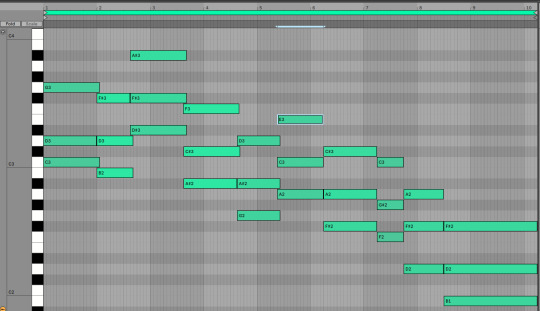
I emphasise at this point that I have no idea what I'm doing, I'm just pushing notes around until they sound good to me. Maybe I would know how to make them sound better if I knew more music theory! But also at some point you gotta stop theorising and try writing music.
So this chord progression ended up consisting of...
Csus2 - Bm - D♯m - A♯m - Gm - Am - F♯m - Fm - D - Bm
Or, sorted into alphabetical order, I used...
Am, A♯m, Bm, Csus2, D, D♯m, Fm, F♯m, Gm
Is that too many minor chords? idk! Should all of these technically be counted as part of the 'progression' instead of transitional bits that don't count? I also dk! Maybe I'll find out soon.
I did not even try to stick to a scale on this, and accordingly I'm hitting just about every semitone at some point lmao. Since I end on a B minor chord, we might guess that the key ought to be B minor? In that case, we can consult the circle of fifths and determine that F and C would be sharp. This gives the following chords:
Bm, C♯dim, D, Em, F♯m, G, A
As an additional check, the notes in the scale:
B, C♯, D, E, F, G♯, A
Well, uh. I used. Some of those? Would it sound better if I stuck to the 'scale-derived' chords? Know the rules before you break them and all that. Well, we can try it actually. I can map each chord in the original to the corresponding chord in B minor.
This version definitely sounds 'cleaner', but it's also... less tense I feel like. The more dissonant choices in the first one made it 'spicier'. Still, it's interesting to hear the comparison! Maybe I could reintroduce the suspended chord and some other stuff and get a bit of 'best of both worlds'? But honestly I'm pretty happy with the first version. I suppose the real question would be which one would be easier to fit a lead over...
Anyway, for the sake of argument, suppose you wanted to divide this into three melodies. One way to do it would be to slice it into low, central and high parts. These would respectively go...
Since these chords mostly move around in parallel, they all have roughly the same shape. But equally you could pick out three totally different pathways through this. You could have a part that just jumps to the nearest note it can (until the end where there wasn't an obvious place to go so I decided to dive)...

Those successive relationships between notes also exist in this track. Indeed, when two successive chords share a note, it's a whole thing (read: it gets mentioned sometimes in music theory videos). You could draw all sorts of crazy lines through the notes here if you wanted.
Nevertheless, the effects of movements between chords come in part from these relationships between successive notes. This can give the feeling of chords going 'up' or 'down', depending on which parts go up and which parts go down.
I think at this point this post is long enough that trying to get into the nitty gritty of what possible movements can exist between chords would be a bit of a step too far, and also I'm yawning a lot but I want to get the post out the door, so I let's wrap things up here. Next time: we'll continue our chord research and try and figure out how to use that Roman numeral notation. Like, taking a particular Roman numeral chord progression and see what we can build with it.
Hope this has been interesting! I'm super grateful for the warm reception the last two articles got, and while I'm getting much further from the islands of 'stuff I can speak about with confidence', fingers crossed the process of learning is also interesting...
65 notes
·
View notes
Text
Cale: *commits calebab*
Clopeh + God of Despair temple: Caught you in 8K UHD surround sound 16 Gigs ram, HDR GEFORCE RTX, TI-80 texas insturments, Triple A duracell battery ultrapower100 Cargador Compatible iPhone 1A 5 W 1400 + Cable 100% 1 Metro Blanco Compatible iPhone 5 5 C 5S 6 SE 6S 7 8 X XR XS XS MAX GoPro hero 1 2 terrabyte xbox series x Dell UltraSharp 49 Curved Monitor - U4919DW Sony HDC-3300R 2/3" CCD HD Super Motion Color Camera, 1080p Resolution Toshiba EM131A5C-SS Microwave Oven with Smart Sensor, Easy Clean Interior, ECO Mode and Sound On/Off, 1.2 Cu. ft, Stainless Steel HP LaserJet Pro M404n Monochrome Laser Printer with Built-in Ethernet (W1A52A) GE Voluson E10 Ultrasound Machine LG 23 Cu. Ft. Smart Wi-Fi Enabled InstaView Door-in-Door Counter-Depth Refrigerator with Craft Ice Maker GFW850SPNRS GE 28" Front Load Steam Washer 5.0 Cu. Ft. with SmartDispense, WiFi, OdorBlock and Sanitize and Allergen - Royal Sapphire Kohler K-3589 Cimarron Comfort Height Two-Piece Elongated 1.6 GPF Toilet with AquaPiston Flush Technology., Quick Charge 30W Cargador 3.0 Cargador de Viaje Enchufe Cargador USB Carga Rápida con 3 Puertos carga rápida Adaptador de Corriente para iPhone x 8 7 Xiaomi Pocophone F1 Mix 3 A1 Samsung S10 S9 S8AUKEY Quick Charge 3.0 Cargador de Pared 39W Dual Puerto Cargador Móvil para Samsung Galaxy S8 / S8+/ Note 8, iPhone XS / XS Max / XR, iPad Pro / Air, HTC 10, LG G5 / G6 AUKEY Quick Charge 3.0 Cargador USB 60W 6 Puerto Cargador Móvil para Samsung Galaxy S8 / S8+ / Note 8, LG G5 / G6, Nexus 5X / 6P, HTC 10, iPhone XS / XS Max / XR, iPad Pro/ Air, Moto G4 SAMSUNG 85-inch Class Crystal UHD TU-8000 Series - 4K UHD HDR Smart TV with Alexa Built-in (UN85TU8000FXZA, 2020 Model) GE 38846 Premium Slim LED Light Bar, 18 Inch Under Cabinet Fixture, Plug-In, Convertible to Direct Wire, Linkable 628 Lumens, 3000K Soft Warm White, High/Off/Low, Easy to Install, 18 Ft Bissell Cleanview Swivel Pet Upright Bagless Vacuum Cleaner Trane20,000-Watt 1-Phase LPG/NG Liquid Cooled Whole House Standby Generator
#if you read all that congratulations because even I didn't#tcf#trash of the count's family#lcf#lout of the count’s family#cale henituse#clopeh sekka#god of despair#tcf incorrect quotes#incorrect tcf quotes
229 notes
·
View notes
Text
I was watching Peace Petal's video on what might happen with MLP G6 (you should watch it, it's good).
Because I mostly agree with points raised, I want to instead focus on the fact that I find it rather funny that fans get up in arms at the idea of a new gen where the character names and colour schemes etc are re-used but with new personalities, with the argument that "that's not XYZ, they're changing the character etc"
Funny because I felt like that when I first saw g4. I was so upset to see Rainbow Dash was no longer the elegant and stylish mare she used to be, and how Pinkie went from being the voice of reason to essentially the opposite. And so on and so on.
But I happened to watch g4 in 2013 and I liked it and then I came to love it. The realisation that helped was the fact that Hasbro recycles characters all the time. It's most notable in g4, partly because the show had so many named characters while in g3 most repeated names would've been toy-exclusive and so you didn't explore their personality as much. It's a weird concept, since I can't think of many series that do this. Shows/toylines often either reboot the series with almost exactly the same characters (e.g. transformers has had the same Optimus Prime every time), or they start from scratch.
This is also why I don't feel too bad about Monster high's changes to the characters between generations. They're mostly using the names and stylistic elements to act as a springboard for a new series.
A similar thing could even be said about bionicle's g2. OK I'm finding a lot of examples, but these are all the ones I can really think of right now.
I do agree with Peace Petal that it would be wiser to distance itself completely from g4 and thus use inspiration from characters that aren't the mane 6, but if they do re-use Rainbow Dash's name for the third time (or Applejack for the forth) and make her a completely different pony, I really would not care. They're not the same character; it's not the same universe. They just happen to share a name and design influences.
But yes, the key thing is it needs to be a complete separation from g4. g5 was quite an outlier by retaining ties to the previous gen and I think that missed the opportunity for a fresh start, a blank slate with none of the complicated lore that had built up and complete freedom to do as they pleased.
I also really want them to bring back Wysteria. She could be the Rainbow Dash (g4) equivalent and I would not be mad I just want my first pony to get speaking roles and toys.
#my little pony#mlp g4#mlp g5#mlp g6#should I just list all the generations?#mlp g1#mlp g3#I didn't really talk about g2 so I won't tag that#Wysteria#saying all this it's worth pointing out that repeated names of key characters will leave a sour taste in a lot of people's mouths#even if from a logical perspective it shouldn't#but their target audience is children#a lot of whom are probably like 2 and so have no attachment to g4 names#(I mean they'll be their customers by the time g6 comes out)#(when they're 3-4)#(which was when I first got my ponies)#I don't think I've seen anyone complaining that Applejack's personality changed from g1 to g4#hence why I think Hasbro might still do it#mlp fim
12 notes
·
View notes
Text
my thoughts on "gen 6"
minor spoilers!!! okay so its cute, ii kinda fuck with it its just.. the more the try to milk to series, the more they fuck up the lore and every they established previously. which obviously magic and cutie marks have different meanings and explanations throughout every generation. but why its not as important there is because every generation had new characters, new worlds, new lore. but with g5 and "g6" their trying to squeeze as much out of g4 as possible, not really caring about previously established world and magic and lore from that specific generation. so far cutie marks have been explained too many different times in g4, they were representations of what makes them special, their special talent, what they were passionate about or gifted in. in g5 its just like.... idk they still had cutie marks even tho there wasn't any magic for decades? and they weren't important at all throughout make your mark so when opaline started stealing all the them for power it didnt feel like something to be worried about. and in the fan-claimed g6, they seemingly go into teens/adulthood not getting their cutie marks and having to go to a special camp just to find out what it is?
ii dont really care about the character mixing, they're clearly trying to do some au where both gens exist at the same time, but it feels bad and icky.
im def going to watch it if it comes out. if you want to hear more of my thoughts on mlp ill gladly make more posts or a new account.
#autism#my little pony#my little pony friendship is magic#my little pony fim#mlp fim#mlp g4#mlp g5#mlp g6#mlp g6 leak#mlp camp cutie mark#mlp leaks#minor spoilers
5 notes
·
View notes
Note
I know you're doing some Sombra art, but if you worked with the MLP G6 team, which G4 characters (both hero and villain) would you bring back? Unless if you want every MLP gen to be it's own seperate thing moving foward
I like the gens being separate but I think if g6 brought back old characters it could either be a soft reboot (similar ish to what I’m doing w my rewrite) or something akin to how g1 and g3 characters were used for g4 but were changed drastically enough they didn’t get confused (ex g3 pinkie having a straight and lighter mane while g4 has dark pink and curly so even though they have same name you can easily tell the two apart)
tho I’m not big on the execution (and blatant lack of g3) and hope if they pick it up again they’d toy with designs (similar to the og version of g5 movie concept arts)— I enjoy g6s idea of mixing gens bc that’s p much what g4 did lol I always enjoy looking back and seeing similar characters it’s fun :3 I think in my ideal world it would be a main character from each gen in some way, methinks g1 and g4 have enough overlap/reused characters they would be clumped together, my thought is maybe a few of the mane six (most likely some combo of twilight, pinkie, RD, or flutters due to fan favorites/marketability), some g3 (minty and toolaroola would be my picks :3 or starsong i love her as well) and maybe one or two from g5 (izzy bc I love her design and misty ik is a fan favorite and was in g6, that or combine the two? Their designs are similar enough it might work, tho I’d say change names to be more in line w mlp name conventions, maybe make moonbow her full name not just last name bc I love it sm)
l also enjoy bringing back villians that’s a big thing I love from g4 was it reusing older characters in new ways, either by rewriting them to be new or directly referencing their source so I’d definitely love if a g6 played with old characters in new ways :3€ esp ones that didn’t come back in g4 (HASBROOOO GIVE ME BACK CATRINA AND MY LIFE IS YOURSSSS)
oh wow I yapped a lot longer then I meant to oopsies lol but yeah my vision would be a new series with old characters but making them new via new designs or personalities/dyanmics :3 not just shoving them into the same world no changes, another thought id enjoy would be if mlp ever played with toy stylization i always loved g3 looked like a toy set in its architect/environments, another idea i think is cute that i would have loved to do in my story if it wasn’t so late game but I’d love if we got an mlp where the little part is taken into account like make those ponies tiny!!! Make them follow Smurf/tinkerbell/thumbalina/arrietty logic I loveeeee characters being tiny in normal huge size worlds it’s never not cute asf for kids series plus adds to the toy thing even more !! It’s cute that is all lol
2 notes
·
View notes
Note
hey Eesti how do you got that 8K UHD surround sound 16 Gigs ram, HDR GEFORCE RTX, TI-80 texas insturments, Triple A duracell battery ultrapower100 Cargador Compatible iPhone 1A 5 W 1400 + Cable 100% 1 Metro Blanco Compatible iPhone 5 5 C 5S 6 SE 6S 7 8 X XR XS XS MAX GoPro hero 1 2 terrabyte xbox series x Dell UltraSharp 49 Curved Monitor - U4919DW Sony HDC-3300R 2/3" CCD HD Super Motion Color Camera, 1080p Resolution Toshiba EM131A5C-SS Microwave Oven with Smart Sensor, Easy Clean Interior, ECO Mode and Sound On/Off, 1.2 Cu. ft, Stainless Steel HP LaserJet Pro M404n Monochrome Laser Printer with Built-in Ethernet (W1A52A) GE Voluson E10 Ultrasound Machine LG 23 Cu. Ft. Smart Wi-Fi Enabled InstaView Door-in-Door Counter-Depth Refrigerator with Craft Ice Maker GFW850SPNRS GE 28" Front Load Steam Washer 5.0 Cu. Ft. with SmartDispense, WiFi, OdorBlock and Sanitize and Allergen - Royal Sapphire Kohler K-3589 Cimarron Comfort Height Two-Piece Elongated 1.6 GPF Toilet with AquaPiston Flush Technology., Quick Charge 30W Cargador 3.0 Cargador de Viaje Enchufe Cargador USB Carga Rápida con 3 Puertos carga rápida Adaptador de Corriente para iPhone x 8 7 Xiaomi Pocophone F1 Mix 3 A1 Samsung S10 S9 S8AUKEY Quick Charge 3.0 Cargador de Pared 39W Dual Puerto Cargador Móvil para Samsung Galaxy S8 / S8+/ Note 8, iPhone XS / XS Max / XR, iPad Pro / Air, HTC 10, LG G5 / G6 AUKEY Quick Charge 3.0 Cargador USB 60W 6 Puerto Cargador Móvil para Samsung Galaxy S8 / S8+ / Note 8, LG G5 / G6, Nexus 5X / 6P, HTC 10, iPhone XS / XS Max / XR, iPad Pro/ Air, Moto G4 SAMSUNG 85-inch Class Crystal UHD TU-8000 Series - 4K UHD HDR Smart TV with Alexa Built-in (UN85TU8000FXZA, 2020 Model) GE 38846 Premium Slim LED Light Bar, 18 Inch Under Cabinet Fixture, Plug-In, Convertible to Direct Wire, Linkable 628 Lumens camera quality? your photos always look like something out of Pinterest!
Hey Aleksandr here (the admin of the blog) I have exactly that camera for begining and I have some idea bout that because I worked as a photographer while I didn't found a new job
2 notes
·
View notes
Note
Caught you in 8K UHD surround sound 16 Gigs ram, HDR GEFORCE RTX, TI-80 texas insturments, Triple A duracell battery ultrapower100 Cargador Compatible iPhone 1A 5 W 1400 + Cable 100% 1 Metro Blanco Compatible iPhone 5 5 C 5S 6 SE 6S 7 8 X XR XS XS MAX GoPro hero 1 2 terrabyte xbox series x Dell UltraSharp 49 Curved Monitor - U4919DW Sony HDC-3300R 2/3" CCD HD Super Motion Color Camera, 1080p Resolution Toshiba EM131A5C-SS Microwave Oven with Smart Sensor, Easy Clean Interior, ECO Mode and Sound On/Off, 1.2 Cu. ft, Stainless Steel HP LaserJet Pro M404n Monochrome Laser Printer with Built-in Ethernet (W1A52A) GE Voluson E10 Ultrasound Machine LG 23 Cu. Ft. Smart Wi-Fi Enabled InstaView Door-in-Door Counter-Depth Refrigerator with Craft Ice Maker GFW850SPNRS GE 28" Front Load Steam Washer 5.0 Cu. Ft. with SmartDispense, WiFi, OdorBlock and Sanitize and Allergen - Royal Sapphire Kohler K-3589 Cimarron Comfort Height Two-Piece Elongated 1.6 GPF Toilet with AquaPiston Flush Technology., Quick Charge 30W Cargador 3.0 Cargador de Viaje Enchufe Cargador USB Carga Rápida con 3 Puertos carga rápida Adaptador de Corriente para iPhone x 8 7 Xiaomi Pocophone F1 Mix 3 A1 Samsung S10 S9 S8AUKEY Quick Charge 3.0 Cargador de Pared 39W Dual Puerto Cargador Móvil para Samsung Galaxy S8 / S8+/ Note 8, iPhone XS / XS Max / XR, iPad Pro / Air, HTC 10, LG G5 / G6 AUKEY Quick Charge 3.0 Cargador USB 60W 6 Puerto Cargador Móvil para Samsung Galaxy S8 / S8+ / Note 8, LG G5 / G6, Nexus 5X / 6P, HTC 10, iPhone XS / XS Max / XR, iPad Pro/ Air, Moto G4 SAMSUNG 85-inch Class Crystal UHD TU-8000 Series - 4K UHD HDR Smart TV with Alexa Built-in (UN85TU8000FXZA, 2020 Model) GE 38846 Premium Slim LED Light Bar, 18 Inch Under Cabinet Fixture, Plug-In, Convertible to Direct Wire, Linkable 628 Lumens, 3000K Soft Warm White, High/Off/Low, Easy to Install, 18 Ft Bissell Cleanview Swivel Pet Upright Bagless Vacuum Cleaner Trane20,000-Watt 1-Phase LPG/NG Liquid Cooled Whole House Standby Generator.Caught you in 8K UHD surround sound 16 Gigs ram, HDR GEFORCE RTX, TI-80 texas insturments, Triple A duracell battery ultrapower100 Cargador Compatible iPhone 1A 5 W 1400 + Cable 100% 1 Metro Blanco Compatible iPhone 5 5 C 5S 6 SE 6S 7 8 X XR XS XS MAX GoPro hero 1 2 terrabyte xbox series x Dell UltraSharp 49 Curved Monitor - U4919DW Sony HDC-3300R 2/3" CCD HD Super Motion Color Camera, 1080p Resolution Toshiba EM131A5C-SS Microwave Oven with Smart Sensor, Easy Clean Interior, ECO Mode and Sound On/Off, 1.2 Cu. ft, Stainless Steel HP LaserJet Pro M404n Monochrome Laser Printer with Built-in Ethernet (W1A52A) GE Voluson E10 Ultrasound Machine LG 23 Cu. Ft. Smart Wi-Fi Enabled InstaView Door-in-Door Counter-Depth Refrigerator with Craft Ice Maker GFW850SPNRS GE 28" Front Load Steam Washer 5.0 Cu. Ft. with SmartDispense, WiFi, OdorBlock and Sanitize and Allergen - Royal Sapphire Kohler K-3589 Cimarron Comfort Height Two-Piece Elongated 1.6 GPF Toilet with AquaPiston Flush Technology., Quick Charge 30W Cargador 3.0 Cargador de Viaje Enchufe Cargador USB Carga Rápida con 3 Puertos carga rápida Adaptador de Corriente para iPhone x 8 7 Xiaomi Pocophone F1 Mix 3 A1 Samsung S10 S9 S8AUKEY Quick Charge 3.0 Cargador de Pared 39W Dual Puerto Cargador Móvil para Samsung Galaxy S8 / S8+/ Note 8, iPhone XS / XS Max / XR, iPad Pro / Air, HTC 10, LG G5 / G6 AUKEY Quick Charge 3.0 Cargador USB 60W 6 Puerto Cargador Móvil para Samsung Galaxy S8 / S8+ / Note 8, LG G5 / G6, Nexus 5X / 6P, HTC 10, iPhone XS / XS Max / XR, iPad Pro/ Air, Moto G4 SAMSUNG 85-inch Class Crystal UHD TU-8000 Series - 4K UHD HDR Smart TV with Alexa Built-in (UN85TU8000FXZA, 2020 Model) GE 38846 Premium Slim LED Light Bar, 18 Inch Under Cabinet Fixture, Plug-In, Convertible to Direct Wire, Linkable 628 Lumens, 3000K Soft Warm White, High/Off/Low, Easy to Install, 18 Ft Bissell Cleanview Swivel Pet Upright Bagless Vacuum Cleaner Trane20,000-Watt 1-Phase LPG/NG Liquid Cooled Whole House Standby Generator.
NOT ASHAMED!
2 notes
·
View notes
Text
Keeping up with the new MLP leaks/situation is quite fun tbh I can't fully make heads nor tails of it but it's interesting to say the least.
I still want G6 to just be a fresh start, no influences of G4 and G5 (except stuff like similar names, like how G3 rebooted some characters). But from the looks of it at least recently the plans were for Hasbro to make more of a G4/G5-focused series, whether it be Camp Cutiemark or Ponyverse or something else.
Idk I'd just like a fresh start for these cartoon horses. One of the fun things as an MLP fan for me as a kid was seeing how they would completely revamp things from time to time. I saw the G2, G3 and G4 reboots happen when I was young and it was always cool to see the world and characters and style completely reinvented each time.
4 notes
·
View notes
Text
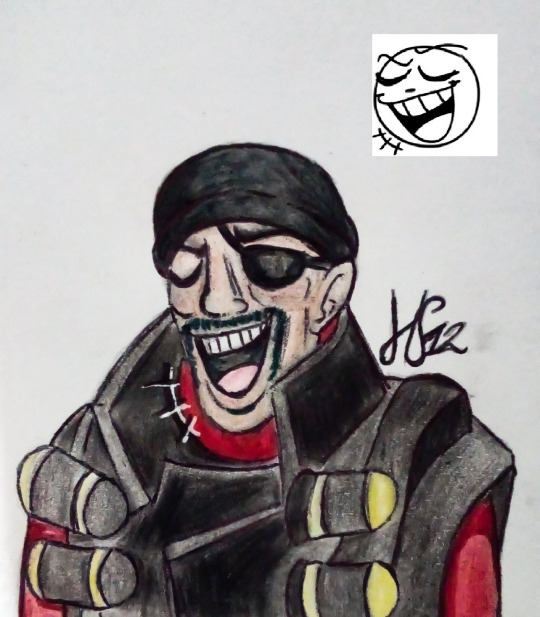


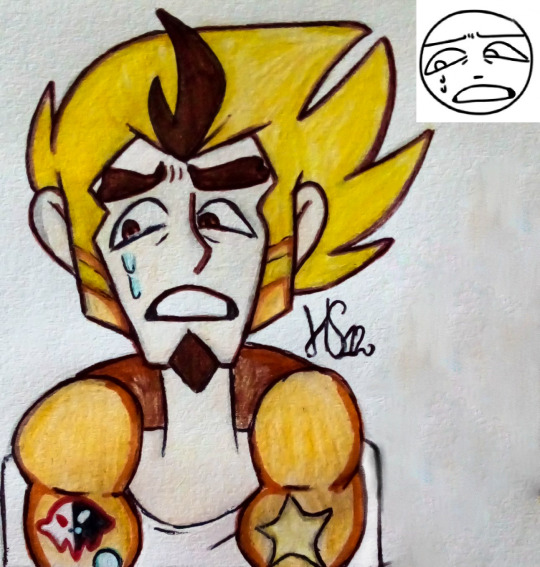
Here is another set of drawings I did from the expression chart made by @hairscare For Expression G5 I drew Demoman from Team Fortress 2 (Game) Expression G6 I drew Ripper Roo from Crash Bandicoot (Game) Expression G7 I drew Amy Mcnight, Amy is a character who belongs to @1246114 And Expression G8 I drew Aurther Kingsmen from Mystery Skulls Animated (Web Series), This person also has a tumblr account under @mysterybensmysteryblog
#HokkaidosSoul12#hairscare#Demoman#tf#tf2#tf2 demoman#crash bandicoot#ripper roo#Kangaroo#expression chart#Amy#Werebeast#Amy Mcnight#showdownbandit#puppet#team fortress 2#Mystery Skulls#arthur kingsmen#Arthur#Mystery Skulls Animated
40 notes
·
View notes